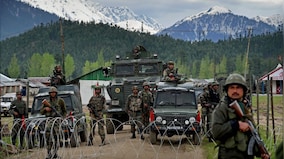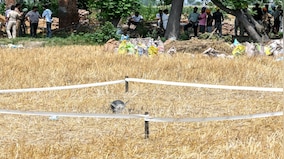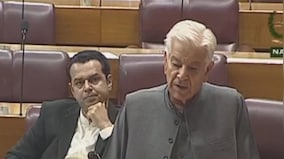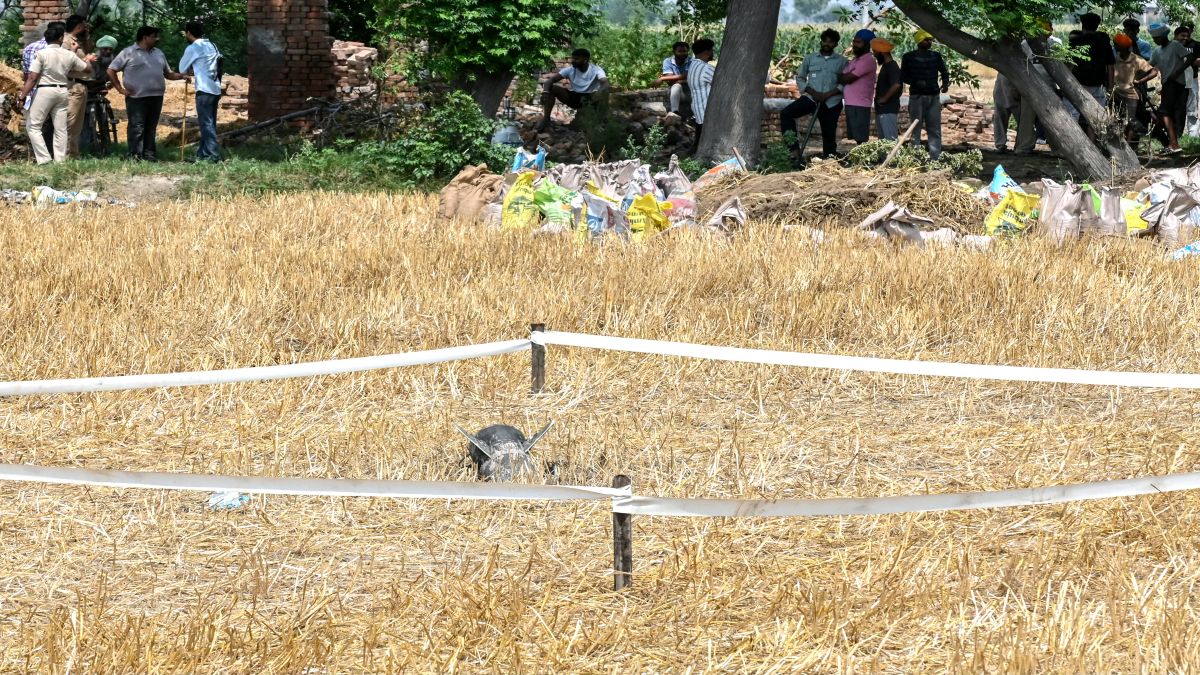Tensions have been at an all-time high between India and Pakistan. Islamabad launched multiple drone and missile attacks overnight towards India’s border districts, which were foiled by the Indian Armed Forces.
Ties between the two neighbours plunged further after the Pahalgam terror attack on April 22. India avenged the killing of civilians in Jammu and Kashmir through air strikes on nine terror sites in Pakistan and Pakistan-occupied Kashmir (PoK) on the intervening night of Tuesday (May 6) and Wednesday (May 7). Islamabad has since been trying to target India’s border towns.
Amid calls for calm from many world powers, how did India and Pakistan get here? Let’s recap.
The ‘original escalation’: Pahalgam terror attack
On April 22, at least three terrorists – two identified as Pakistani nationals and one Kashmiri local – gunned down more than 20 men, mostly tourists, after separating them from women and children and inquiring about their religion in the scenic Baisaran meadow, some 5 km from Pahalgam in J&K.
One Kashmiri ponywallah and a Nepali national were also among the 26 men killed in the terror attack.
The Resistance Front, an offshoot of Pakistan-based Lashkar-e-Taiba (LeT), claimed responsibility.
India blamed Pakistan for the terror attack, pointing to Islamabad’s history of endorsing terrorism in Jammu and Kashmir. Pakistan denied the charges and called for a “neutral” investigation into the Pahalgam massacre.
After India’s punitive measures against Pakistan in the wake of the Pahalgam attack, the Pakistan Army began resorting to unprovoked small-arms firing from posts across the Line of Control (LoC) in several areas of Jammu and Kashmir.
As India mourned the loss of civilian lives, Prime Minister Narendra Modi vowed to “identify, track and punish every terrorist and their backers.”
“We will pursue them to the ends of the Earth,” he said, a signal of what would come two weeks later.
Operation Sindoor launched
All three divisions of the Indian Armed Forces – the Army, Air Force and the Navy – launched military strikes, under the name of ‘Operation Sindoor’, on terror infrastructure in Pakistan and PoK between 1:05 am and 1:30 am on Wednesday.
India struck 21 terror camps and training facilities across nine locations, killing at least 100 terrorists in Pakistan and PoK. The terror targets included four facilities of Maulana Masood Azhar’s Jaish-e-Mohammad (JeM), including headquarters in Bahawalpur; three Lashkar-e-Taiba (LeT) terror hubs, including in Muridke and Muzaffarabad; and two Hizbul Mujahideen locations.
The targets were chosen so as not just to take revenge for the Pahalgam attack but also hit sites where other attacks on Indian soil were planned and directed, including the 2019 Pulwama attack, the 2016 Pathankot attack and the 2008 Mumbai terror attacks.
The Centre emphasised the actions were “focused, measured and non-escalatory”. “No Pakistani military facilities have been targeted. India has demonstrated considerable restraint in selection of targets and method of execution,” the statement said.
As per reports, JeM chief Masood Azhar’s 10 family members and four close aides were killed as Indian strikes targeted the terror group’s headquarters in Bahawalpur in Pakistan’s Punjab.
Islamabad alleged India’s strikes killed several civilians, including women and children. But its accusations were swiftly debunked by New Delhi. Pakistan also claimed it had downed five Indian military aircraft. However, the Indian embassy in Beijing dismissed it as “misinformation”.
In a press conference on Thursday (May 8), Foreign Secretary Vikram Misri, who busted several misleading claims by Pakistan, said, “When the time is right, an official announcement will be made”.
Indians killed in Pak shelling
After Operation Sindoor, Pakistan violated the ceasefire agreement with heavy artillery fire across the Line of Control (LoC) in Jammu and Kashmir. As per the Ministry of External Affairs (MEA) statement on Thursday, over 13 civilians were killed and 59 others injured in the intense artillery fire reported in Poonch, Kupwara, Baramulla, Uri and Akhnoor.
Pakistani shelling also damaged the building of the local Gurdwara Singh Sabha in the Poonch district of Jammu.
The Indian Army also confirmed that a soldier had died in Pakistani shelling.
#GOC and all ranks of #WhiteKnightCorps salute the supreme sacrifice of L/Nk Dinesh Kumar of 5 Fd Regt, who laid down his life on 07 May 25 during Pakistan Army shelling.
— White Knight Corps (@Whiteknight_IA) May 7, 2025
We also stand in solidarity with all victims of the targeted attacks on innocent civilians in #Poonch Sector.…
Pakistan’s Prime Minister, Shehbaz Sharif, had said after Operation Sindoor, “Pakistan has every right to respond forcefully to this act of war imposed by India, and a forceful response is being given.”
India destroys Lahore air defence system
On the intervening night of May 7-8, Pakistan tried to “engage a number of military targets in Northern and Western India” using drones and missiles, a government statement said.
However, India successfully countered Pakistan’s attacks on military installations in 15 cities, including in Jammu and Kashmir, Punjab, and Gujarat.
The Indian Armed Forces responded to Pakistan’s escalation on Thursday morning by targeting its Air Defence Radars and systems at several places. They “neutralised” an air defence system in Lahore.
ALSO READ: What are Harop drones that Pakistan claims India used in attacks near Karachi, Lahore?
India again foils Pakistan’s drone, missile strikes
Pakistan escalated matters on Thursday night as it launched a barrage of drones and missiles and fired heavy artillery towards several Indian states. On Thursday night, two blasts were reportedly heard in Jammu city near the airport, spreading panic. Soon, the city was plunged into darkness as the power was cut.
Defence sources told PTI that the armed forces intercepted at least eight Pakistani missiles fired towards Jammu’s border areas. Blackouts were implemented in several cities and towns in Jammu and Kashmir, Punjab and Rajasthan after drones were spotted from across the border.
India thwarted Islamabad’s bid to strike military sites in Jammu and Punjab’s Pathankot last night.
The Pakistani forces also fired intense shelling on the LoC and the International Border (IB) in Jammu and Kashmir, Punjab and Rajasthan. A woman was killed and two of her family members injured in Pakistan’s shelling in J&K’s Uri sector.
Pakistan’s armed forces launched multiple attacks using drones and other munitions along the entire western border on the intervening night of May 8-9, which were “effectively repulsed”, the Indian Army said on Friday (May 9). Pakistani troops also resorted to “numerous ceasefire violations” along the Line of Control in Jammu and Kashmir, it added in its post on X.
OPERATION SINDOOR
— ADG PI - INDIAN ARMY (@adgpi) May 9, 2025
Pakistan Armed Forces launched multiple attacks using drones and other munitions along entire Western Border on the intervening night of 08 and 09 May 2025. Pak troops also resorted to numerous cease fire violations (CFVs) along the Line of Control in Jammu and… pic.twitter.com/WTdg1ahIZp
However, Islamabad denied attacking Pathankot, Srinagar and Rajasthan’s Jaisalmer, saying the claims were “entirely unfounded, politically motivated, and part of a reckless propaganda campaign aimed at maligning Pakistan”, reported Reuters.
Pakistan again tried to target Jammu city with drones and other munitions around 3.50 am on Friday. However, its second bid was also foiled by India, as per Indian Express.
Last night, the Border Security Force (BSF) foiled a major infiltration bid at the International Boundary in J&K’s Samba district.
Earlier today, an air raid warning siren was sounded in Chandigarh, warning the civilians of a “possible drone attack.” The siren alert was over after an hour.
Amid rising tensions, the India Armed Forces have maintained their “commitment to non-escalation”, provided it is followed by the Pakistani military.
With inputs from agencies


)
)
)
)
)
)
)
)
)